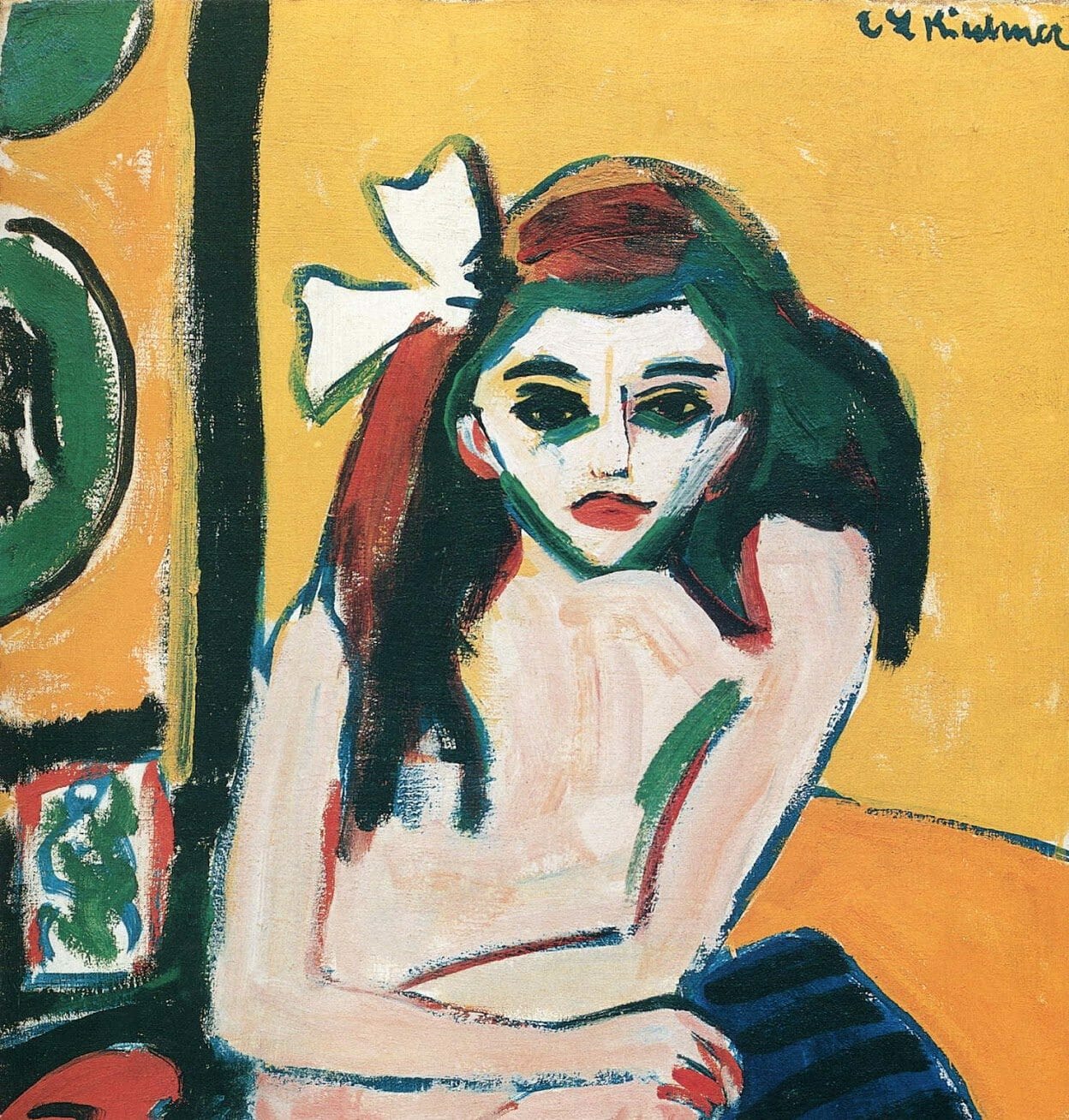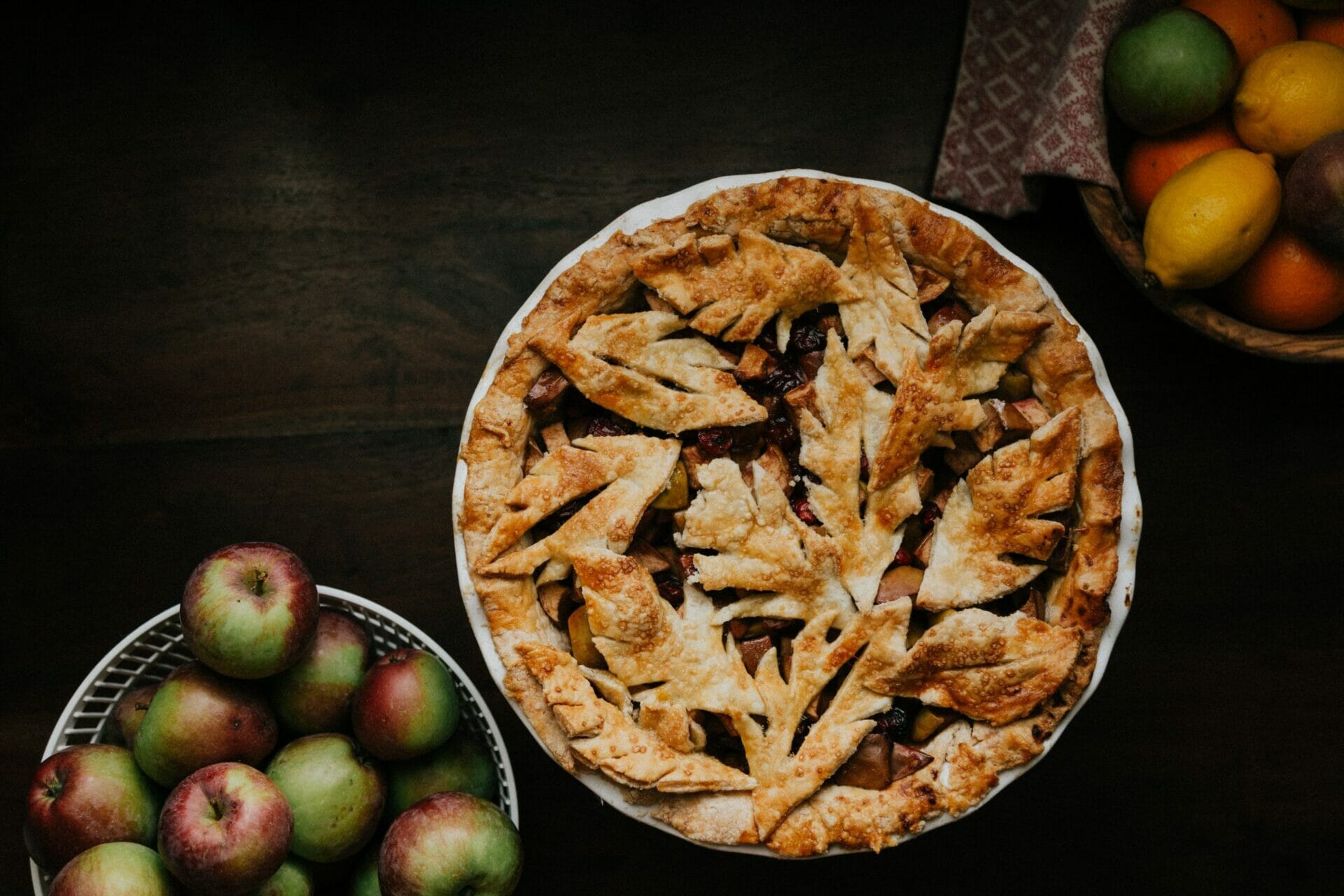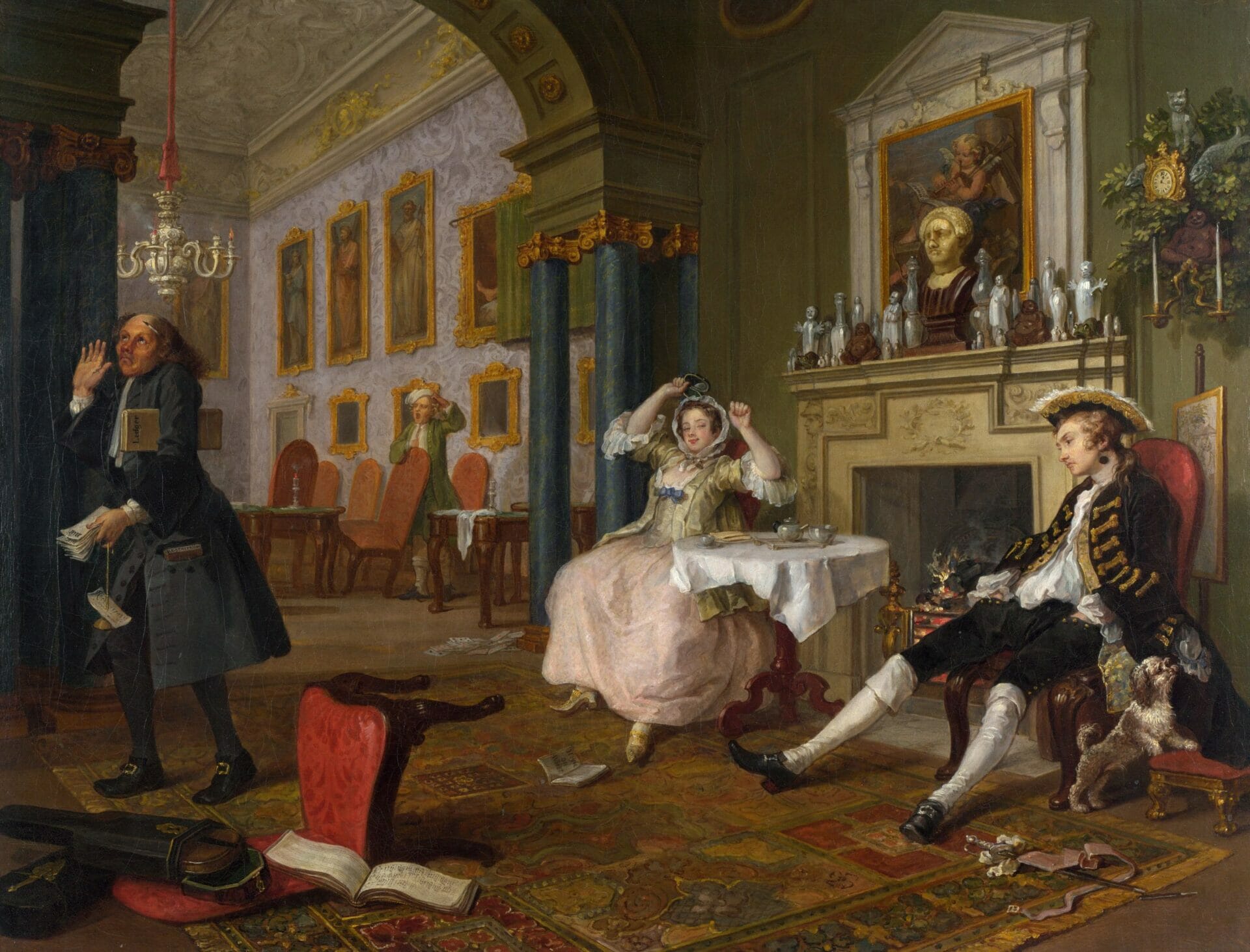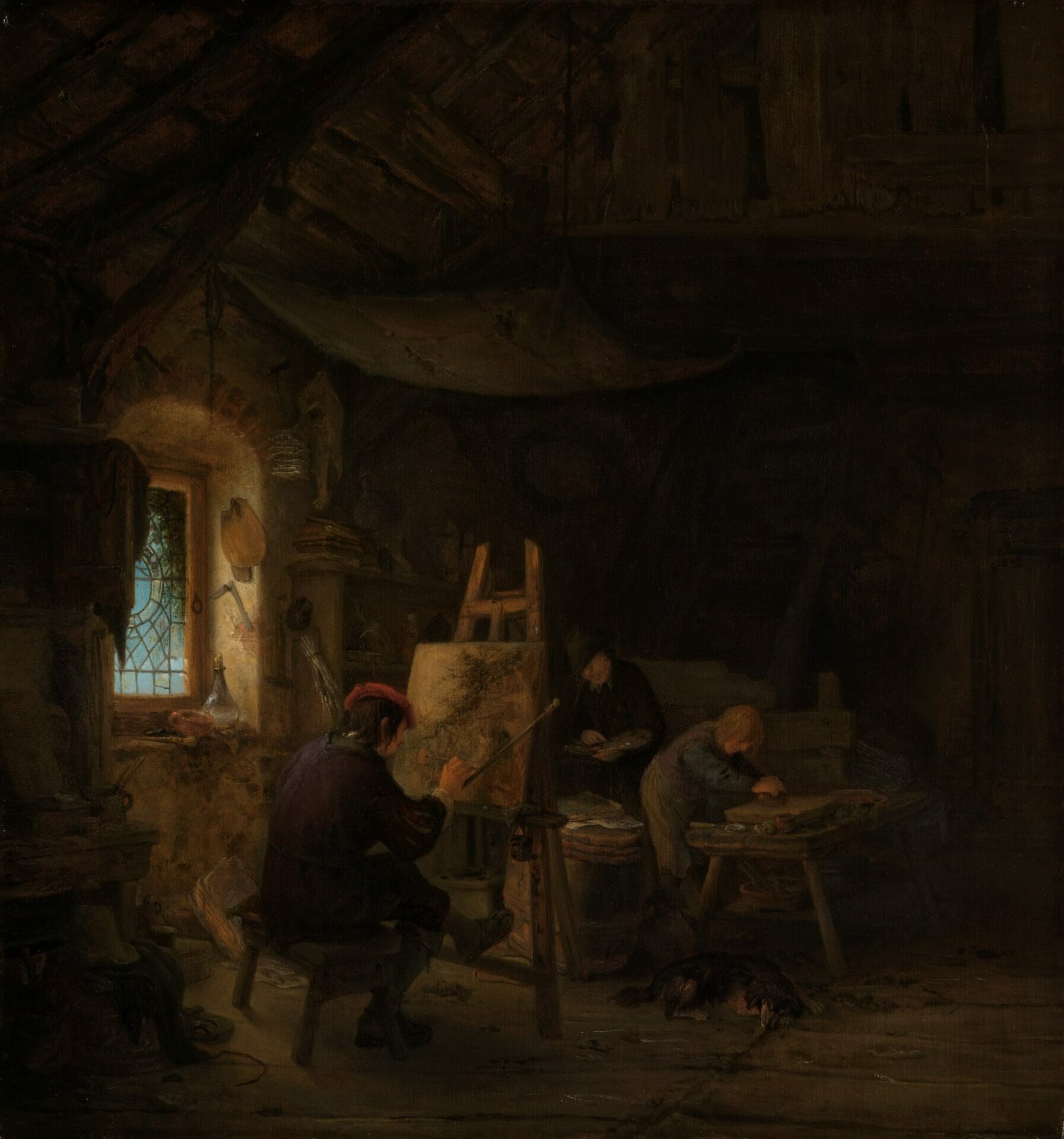
The Painter's Studio and the power of Spices
Artist
Year
Country
Format
Location of the visited exhibition
Material/Technique
Dimensions
Adriaen van Ostade, a pupil of the Dutch painter Frans Hals, was a painter and engraver of genre works from the Dutch Golden Age (1588/1672). Van Ostade depicts genre scenes in which he shows a cross-section of the poor life that was led in the 1600s in his lands. For a period of his life, the painter tried to change his style, emulating that of Rembrandt Harmenszoon van Rijn. He tried to create sacred scenes, but Ostade soon changed his ways and returned to depicting scenes of everyday life.
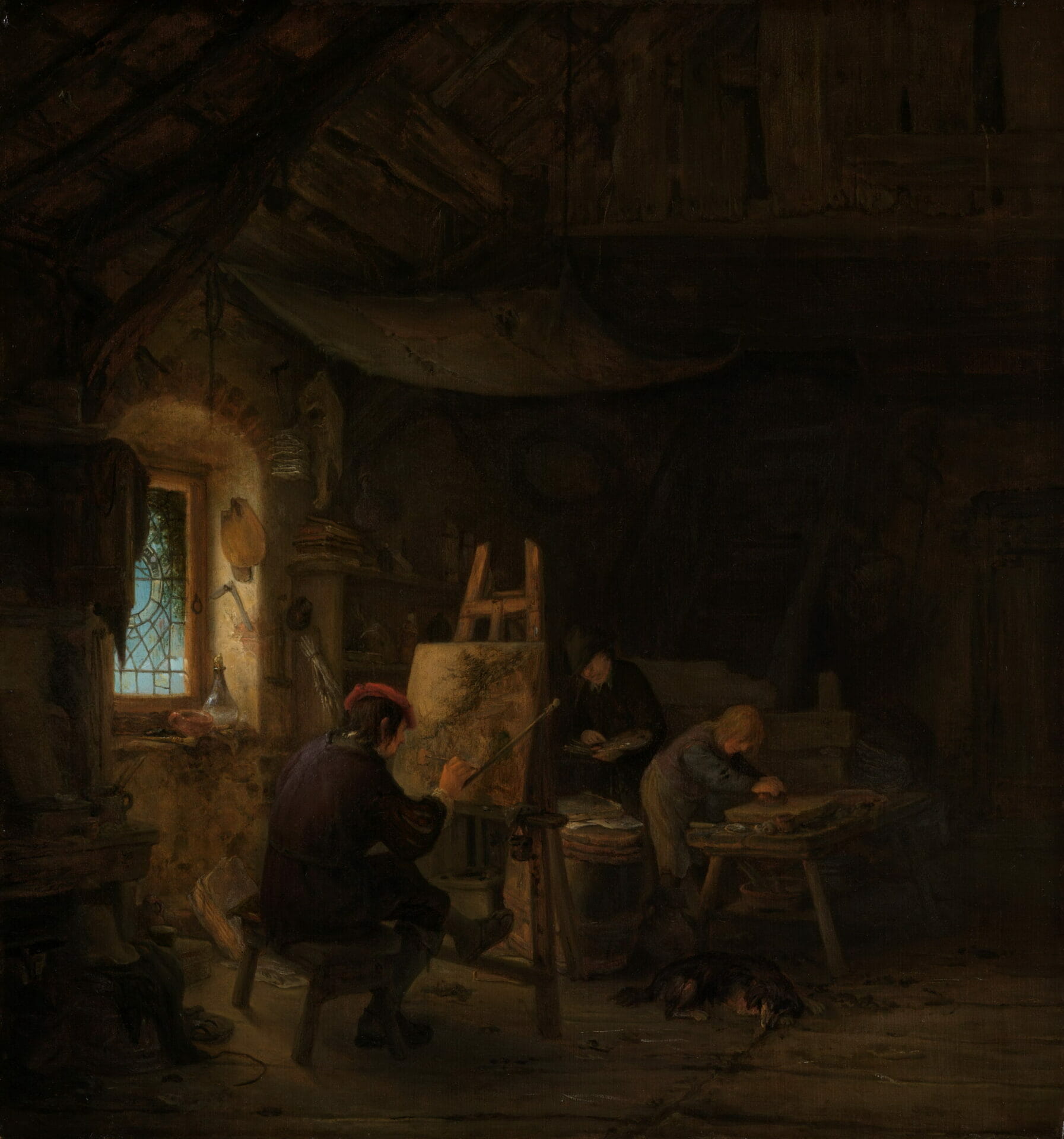
Between 1647 and 1650 the artist painted The Painter’s Studio, work currently on display in the Rijksmuseum in Amsterdam. The work depicts a painter painting a simple landscape. The scene is set in a modest, gloomy studio. The only source of light is a small window on the left. The play of light and shadow is characteristic of Van Ostade, who illuminates his dark works, in shades of grey and brown, with single beams of light, so as to create harmonious contrasts. Van Ostade in this work does not represent his studio, but the studio of a painter who, like him, depicts peasant scenes. In front of the painter, there are two other characters: a man who is chopping spices, and another who is mixing them with binders (oil or egg), creating the color.
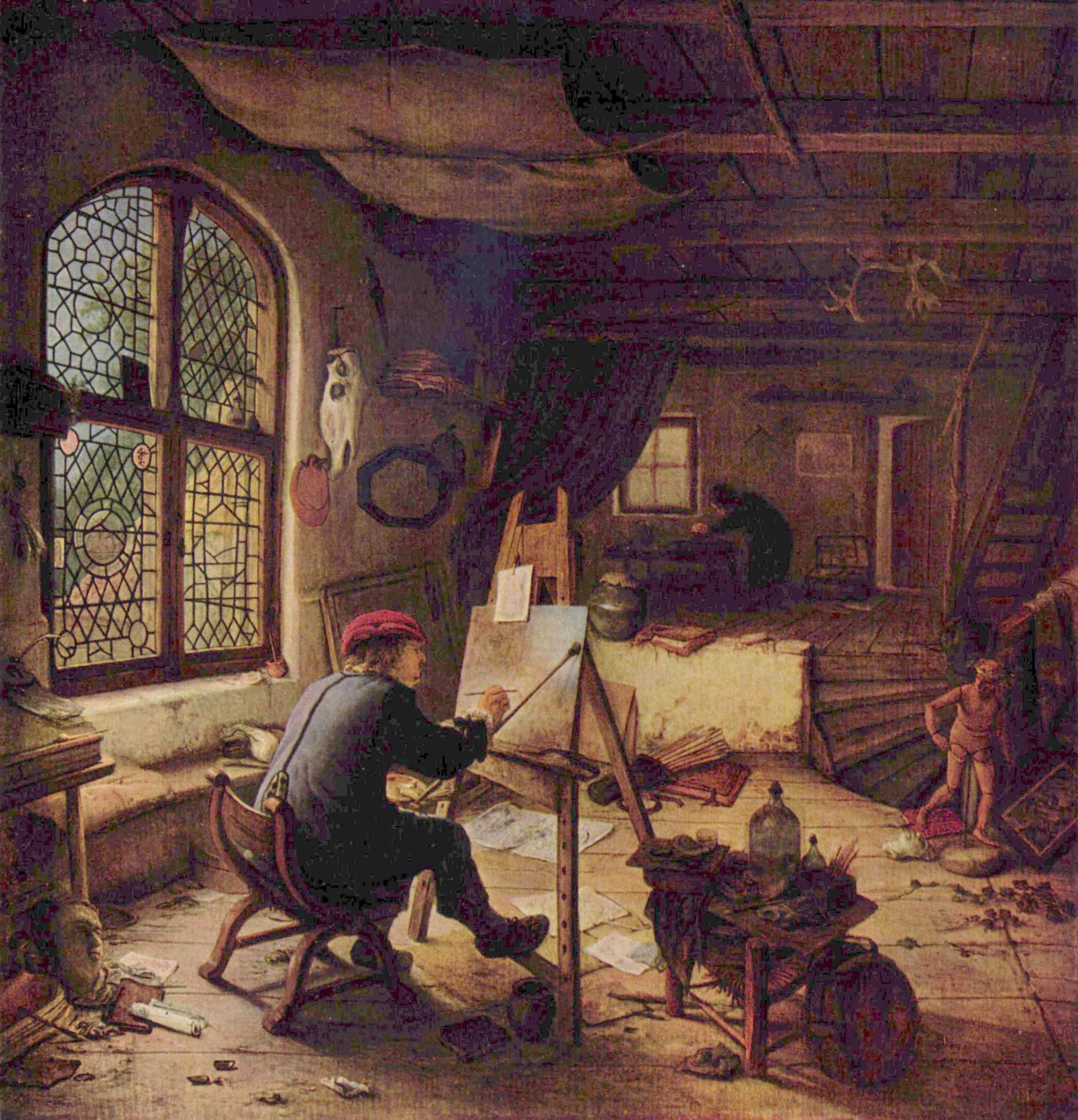
In a copy of this work, also by Van Ostade and kept in the Semper Gallery in Dresden, the painter is shown in profile and the physiognomy corresponds to Adriaen’s self-portrait.
The Book of Art and the importance of spices
Cennino di Andrea Cennini, an Italian painter who lived between the 14th and 15th centuries, wrote a treatise on painting, The Book of Art, in the early 1400s. Cennini explains step by step how to create a work of art; he talks about painting techniques, the preparation of brushes, and how to choose spices and stones for making pigments. Spices, once rare and precious, were used in painters’ workshops to create natural pigments for painting. In the Book of Art, Cennino Cennini explains how to make various colors using certain spices, such as yellow, made from saffron.
With saffron, the yellow color is generated. It is better to keep it in a linen cloth, or on a hot stone or brick; then take half a glass of strong lye. Put the saffron in this; grind it on the stone. You will get a nice color for dyeing a linen cloth, or a canvas. It is also good on paper. Be careful not to expose it to the air, otherwise, it immediately loses its color...
Dune and the spice of Arrakis
Spice is also a key element in Dune, Frank Herbert‘s 1965 saga of science fiction novels. The novel won the Hugo Award in 1966, and the first edition of the Nebula Award for Best Novel. The saga was made into a film in 2021, which premiered at the 78th Venice International Film Festival. It’s directed by Denis Villeneuve and co-written by Jon Spaihts, Eric Roth, and Villeneuve himself. In this film, Duke Leto Atreides (Oscar Isaac) agrees to rule the dangerous desert planet Arrakis, known as Dune. This planet is the only source of the most precious substance in the universe, the melange, or spice.
It is a drug that extends human life, provides superhuman levels of thought, and makes faster-than-light travel practical; a rare, precious commodity from which a kind of magic is generated.
Both on Arrakis and in the studio of an artist of the past, the spice, therefore, represents the magical component. Manipulating rare substances from distant and sometimes exotic (or extraterrestrial) origins generates energy and gives power to the manipulator and beauty to the observer.
Tag
Buy a ☕ for Hypercritic







